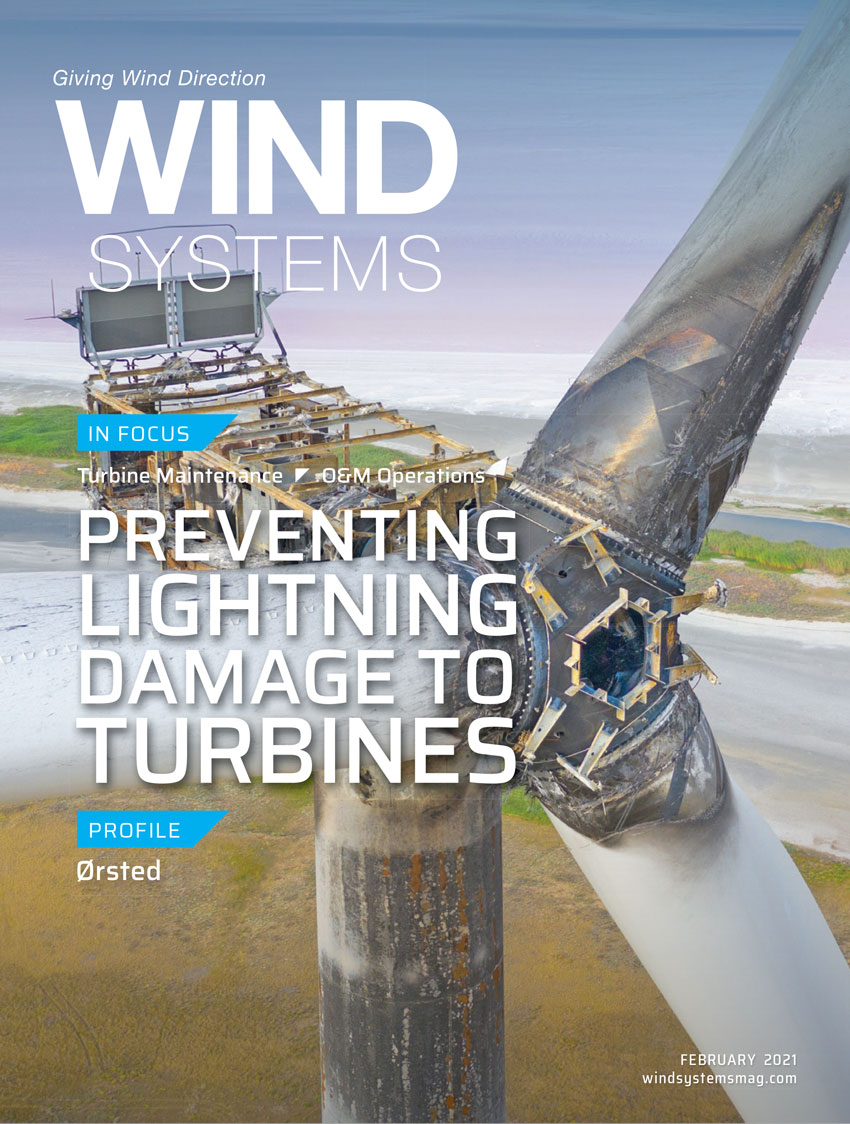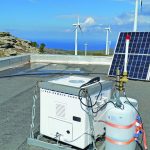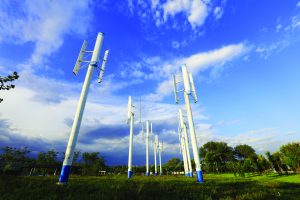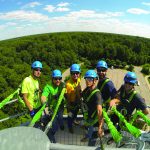Wind-turbine damage caused by lightning strikes seems unavoidable. After all, wind-turbine farms by their nature are located in a very active weather zones. But with today’s maintenance methods and lightning protection techniques, the actual downtime caused by lightning damage can be significantly reduced. It all comes down to knowledge and proactive decision making.
Changing How We Think About Lightning Damage
In a recent interview, DNV-GL engineer Alex Byrne explained that when teams assess new project sites, “We can forecast what we expect the lightning damage to look like at the site … and how the presence of turbines impacts lightning.”
In other words, it’s not a question of whether lightning will affect a site, it’s when — and how great an impact the lightning will have.
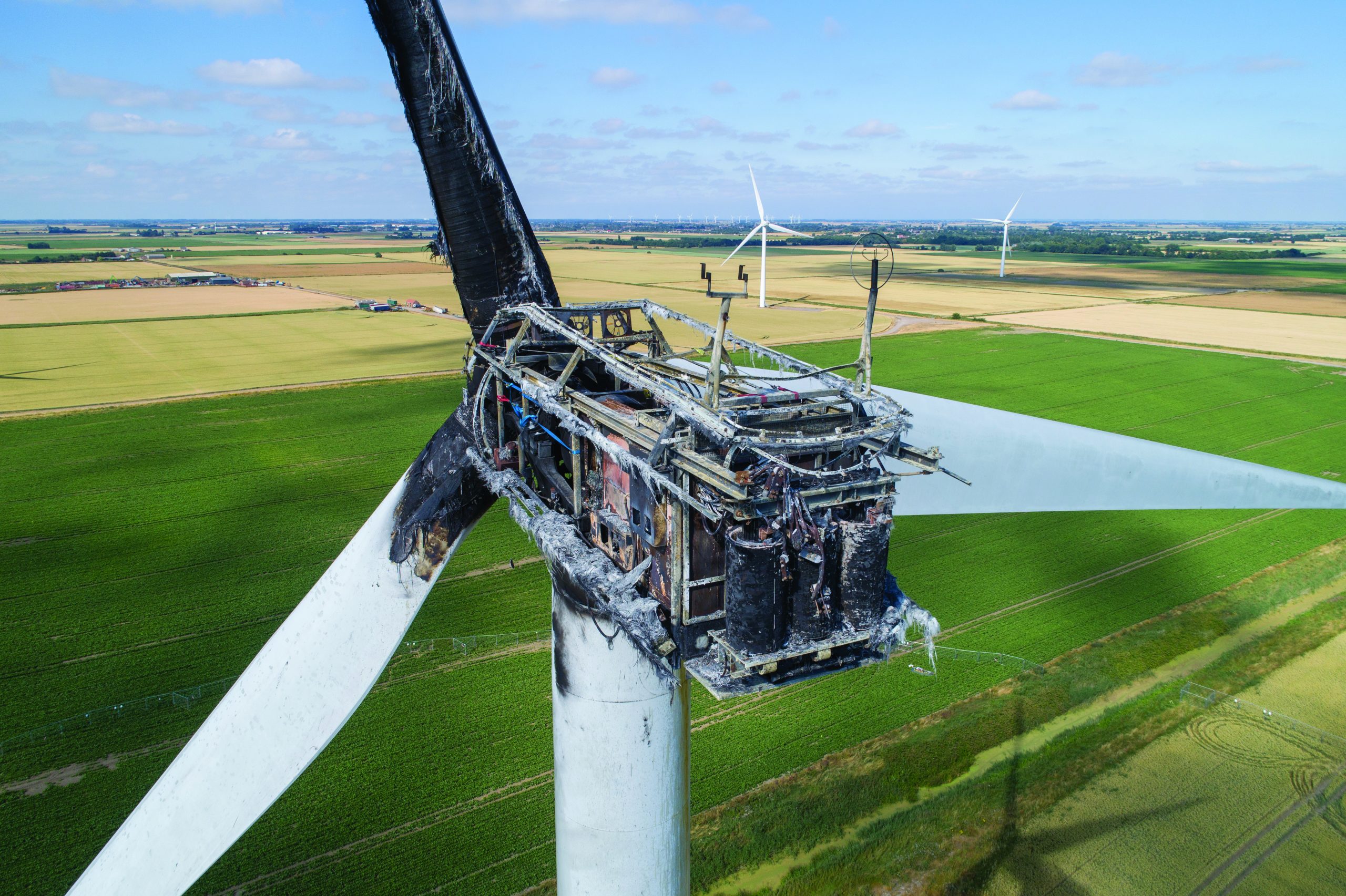
The longer turbines are in service, the more critical maintenance becomes to maximizing its productive lifetime. Striking a balance with aging equipment is tricky, however. For example, owners of mature equipment have found that although power curve upgrades and other retrofits designed to increase Annual Energy Production (AEP) are effective, they increase the risks associated with lightning strikes.
Fortunately, there are a number of practical measures that can reduce the risk of lightning damage or other catastrophic failures, even when blade aerodynamics have been modified, either by design or by normal wear. Most of those measures also contribute to improving production and reducing lifecycle costs.
The bottom line: Maintenance is the only real “insurance” owners have that their investment will continue to generate power (and profits).
Protective Measures for Blades
Regardless of manufacturer, age, or size, blade maintenance is critical. More than 40 percent of all structural damage reports cite blade damage.
The resulting downtime has obvious and immediate impacts on revenue, but when such failures repeatedly occur, they can have long-term detrimental effects on operations, especially if customers seek more reliable energy providers.
Generally, damage in wind blades can arise due to manufacturing defects, precipitation and debris, water ingress, variable loading due to wind, operational errors, lightning strikes, and fire. Early detection and mitigation techniques are required to avoid or reduce damage in costly wind-turbine blades. This article provides an extensive review of viable solutions and approaches for damage mitigation in wind turbine blades.
The most obvious and economical maintenance exercise to maintain turbine blade integrity is to clean and inspect blades regularly.
From a maintenance standpoint, the cleaner the blades, the easier it is to see minor cracks and other issues that should be addressed before they become more concerning (and costly). But even before deterioration can occur, the dirt itself presents significant dangers.
Can Dust and Dirt Actually Attract Lightning?
Dust, in particular, is a lightning magnet, and the cleaner the blades, the fewer opportunities exist for dust to settle onto the blade and attract lightning. Though we commonly only think of metallic items as being conductive, the truth is that dirt and dust have enough conductivity that, when caked on a blade, they will begin to attract lightning.
Oil, salt, and dirt all find their way into minute fissures, contributing to both blade deterioration and higher conductivity, which is attractive to lightning.
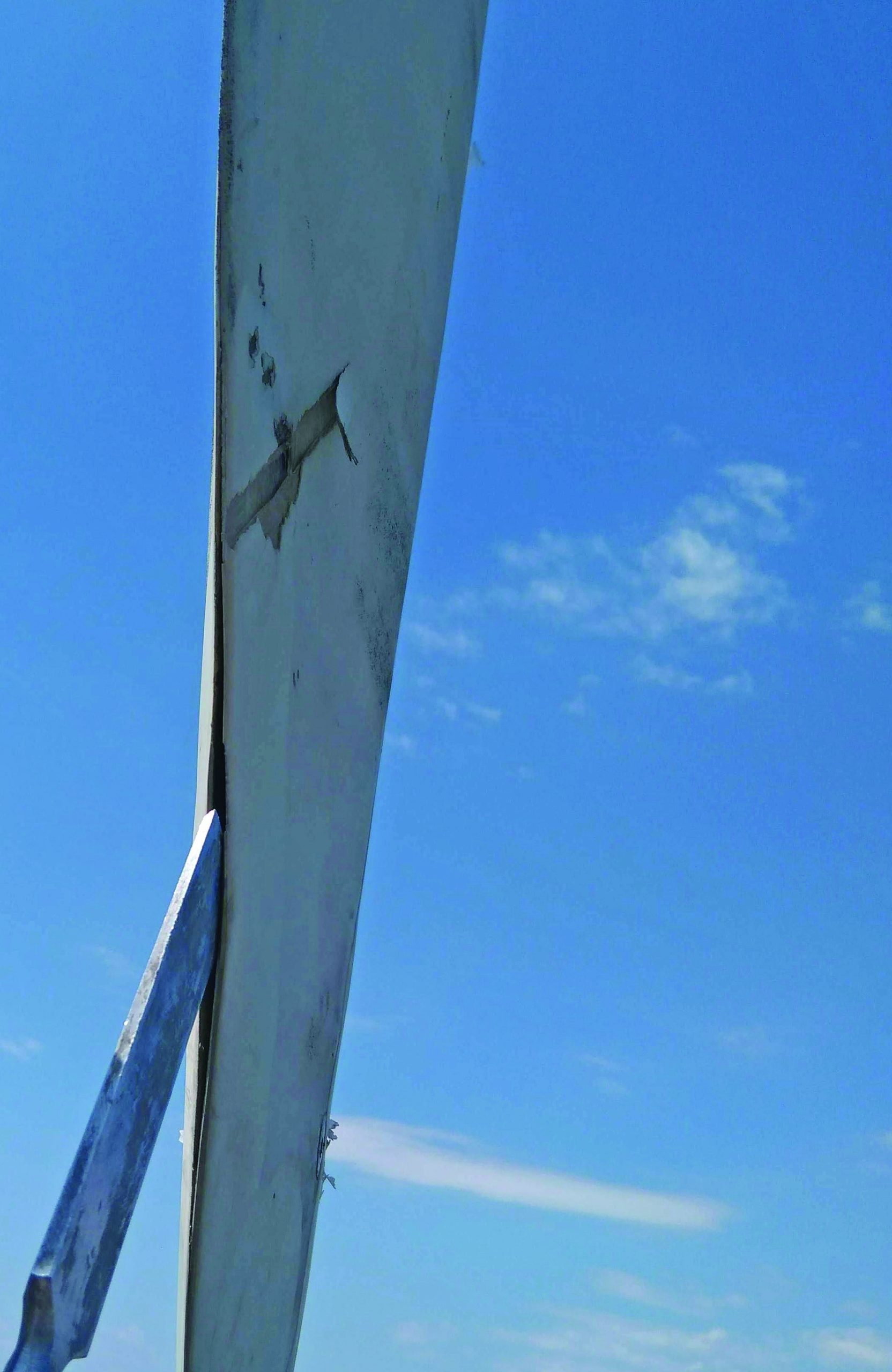
Regular cleanings and inspections help ensure blades are free of contaminants and buildup.
Cleaner blades also mean cleaner drains. Effective drain operation is critical to blade longevity, because any amount of water trapped inside the blade creates an attractive path for lightning to travel through.
During a lightning storm, strong electrical fields are at work. Even in the absence of direct lightning strikes, the electric field is amplified near the blade tips, where air can ionize and form energetic, high-voltage streamers and leaders.
Those streamers or “near strikes” create permanent fissures in the blades’ structure. Although many of those fissures are too small to easily see with the naked eye, over time, storm activity will cause multiple fissures, rendering the blade electrically porous. Its compromised dialectic strength makes it more susceptible to being penetrated by lightning.
While inspecting blades regularly and keeping them reasonably clean will help identify problems early to address premature wear, there are many other critical steps to mitigating the risks lightning poses to turbine blades and other equipment.
Water Presents Additional Threats
Wind turbine blades, like building foundations, are susceptible to many problems caused or exacerbated by water ingress. As water enters the blades through pre-existing cracks or surface defects due to erosion, some moisture enters the interior of the blade, while some is absorbed by the core.
During ensuing freeze-thaw cycles, retained moisture enlarges microcracks in the composite, which leads to debonding of the fiber-matrix interface or delamination on the surface.
However water is introduced, it poses multiple threats to the blade. In addition to moisture creating a clear path for lightning to travel and deteriorating the composite structure, it also allows corrosion to form. When dirt, corrosion, or any contaminant sits anywhere along a lightning down-conductor’s path, especially in contacts or joints, then lightning could damage the down-conductor.
Regular cleaning and inspections will help identify when and where repairs should be applied to minimize surface deterioration.
Retrofits Affect Aerodynamics, Exacerbate Lightning Risks
Power-curve upgrades, winglets, trailing edge serrations, and other retrofits are intended to increase blade and turbine performance by improving airflow and aerodynamics. They’re proven effective, either by providing a power boost, or, in the case of trailing-edge serrations, a noise-dampening effect that allows turbines to be operated at a greater velocity, so they can increase power production without exceeding noise limits.
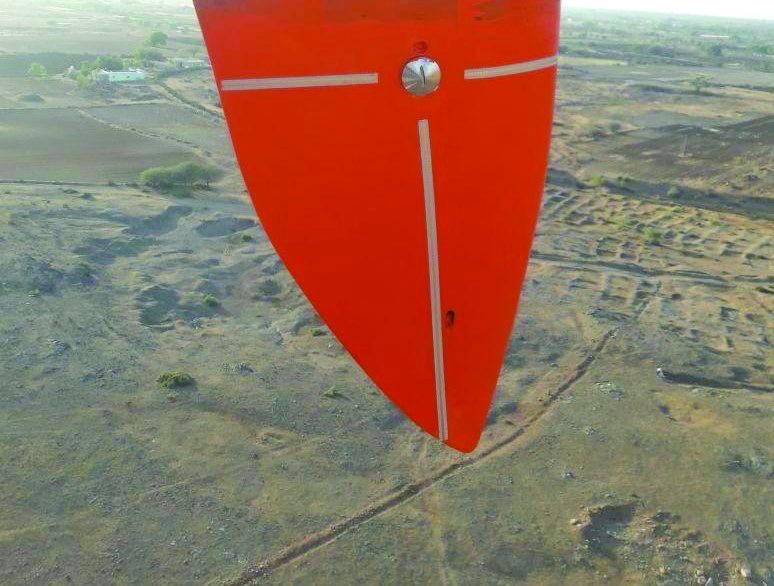
Thanks to their proven results and demand to increase both production and equipment life, retrofits are becoming fairly common. However, owner/operators who are unfamiliar with how retrofits change the way lightning interacts with turbine blades may not realize that retrofits warrant updates to the blades’ lightning protection systems as well.
Fortunately, installing segmented lightning diverter strips at the same time the retrofits are installed proactively addresses the problem, while adding only a minimal incremental expense compared to the total retrofit costs.
Beware Aging Blades
Like dirty blades and some aerodynamic modifications, leading edge damage changes airflow behind the blades. These changes can cause the ionized stream of air off the receptor to be dispersed — making it hard for lightning to follow.
There is a direct correlation between the efficiency of the lightning receptors and the blade’s aerodynamics. Small metal receptors near the blade tips need to create an arc in the air — a “smooth” stream of ionized air for the lightning to follow.
Factory-fresh blades enable smooth airflow over the receptors, producing a clean (or mostly clean) ionized stream of air behind the blade.
The “smoothness” of the air is very dependent on the condition of the blades — the newer the better. Lightning reliably follows a smooth stream of ionized air. But as blades age, a combination of turbulence and leading edge damage occurs, so air is dispersed less evenly. Wear depends on dozens of factors, but generally after about five years, blades are worn to a point where they are no longer creating a smooth arc.
Absent a smooth arc to follow, the receptor is significantly less effective and the down conductor becomes more attractive to lightning, which always seeks the path of least resistance to the ground.
When lightning, even small leaders, strikes the blade, it will start splitting open. The cycle will continue until one of the strikes renders the blade useless. Costly downtime ensues.
Installing segmented lightning diverter strips, which create a continuously ionized air stream for the lightning to follow, can prevent this cycle from occurring.
Constant Improvements Continue to Reduce Risks
While monitoring data for changes in operation is important, we know that maintenance does not always have a predictive component. In other words, you can only prepare for lightning and other catastrophic events, you can’t monitor it away.
In the past two decades, we have gained a deeper understanding of lightning behavior and the associated risks to people and equipment, we’ve also seen and will continue to see tremendous improvements in technology, training, and maintenance practices. As in any rapidly-growing industry, best practices and standards will emerge slowly, so now and for years to come, wind-energy professionals will rely on networking and “tribal knowledge” to determine the best maintenance practices and lightning protection measures for each operation.
Bjorn Hedges, who manages two wind sites in Washington and chairs ESIG’s Wind, Solar, and Energy Storage Operations and Maintenance (O&M) Users Group, said he sees “perpetual improvement” in operational, safety, and maintenance practices. He attributes the rapid advances to a growing number of third-party equipment manufacturers and services and more so, to networking and sharing of the industry’s collective knowledge both in formal organizations like the ESIG Users Groups and in informal conversations among experts throughout the industry.
There may never be a complete and up-to-date maintenance guide for preventing lightning damage in wind operations around the world, but today and always, industry experts are willing to share their expertise to see continued growth and improvement in the field.
















